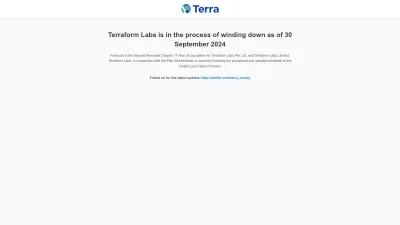TerraClassicUSD (USTC)
TerraClassicUSD (USTC) is a USD-pegged stablecoin designed to improve upon TerraUSD (UST) by addressing its limitations. USTC is built on the Terra Classic blockchain, offering an upgraded version of the original UST.
Overview
TerraClassicUSD (USTC), formerly known as TerraUSD (UST), was initially launched on the original Terra blockchain in 2020. It is an algorithmic stablecoin that aims to achieve stability by diversifying its asset backing. Unlike UST, which lacked real dollar reserves and relied on LUNA token burning and minting, USTC seeks to offer greater resilience. Operating on the Terra Classic blockchain, USTC is distinct from its predecessor and is supported by platforms such as Binance and KuCoin.

| Ticker | USTC |
| Category | Stablecoins |
| Website | https://terra.money |
| @terra_money | |
| Contract Addresses | |
|---|---|
| terra | uusd |
History
The origins of Terra Classic
The original Terra blockchain, known as Terra Classic, was launched in April 2019 by Terraform Labs, founded by Do Kwon and Daniel Shin. The goal was to establish a global payment system supported by fiat-pegged stablecoins, backed by Luna Classic (LUNC). Terra Classic utilized smart contracts to mint and burn stablecoins in response to market demands, with LUNC serving as collateral and a governance token. The network also facilitated decentralized applications (dApps) using USTC as a reference or medium of exchange.
UST becomes USTC
In response to the challenges faced by TerraUSD (UST), and after it lost its USD peg, the community initiated efforts to create a new blockchain, Terra Classic. This led to the rebranding of TerraUSD (UST) as TerraClassicUSD (USTC). This transition marked the beginning of Terra 2.0, emphasizing dApps and community ownership, while excluding algorithmic stablecoins. Terra (LUNA) became the sole cryptocurrency of the new ecosystem.
Ceasing the minting process
On September 21, 2023, the minting of TerraClassicUSD (USTC) was halted following a community vote with 59% approval. This decision was made to protect users and external investors engaged in burning USTC to restore its peg. The move was part of a broader effort to stabilize the ecosystem and enhance investor confidence.
